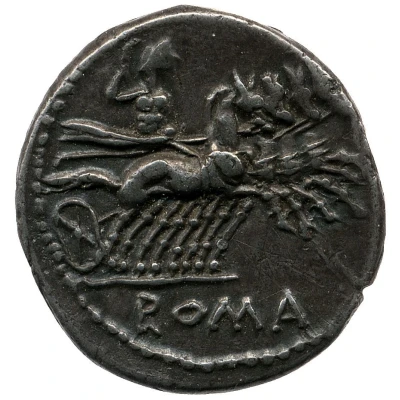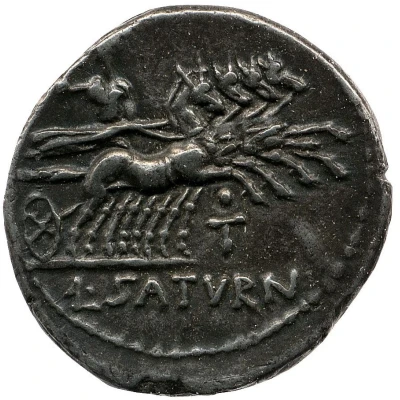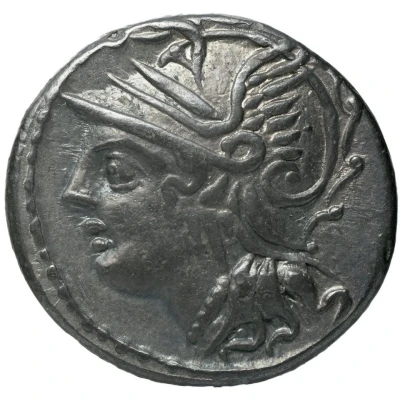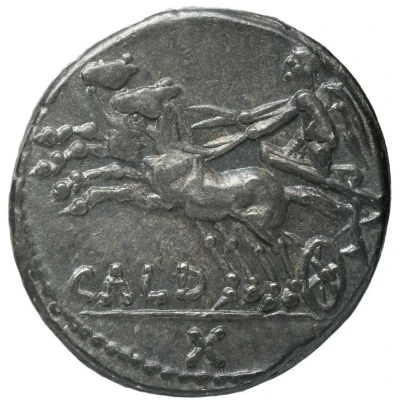
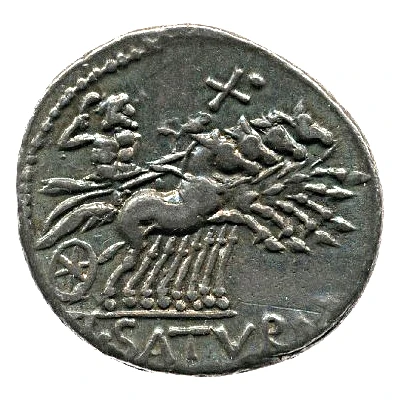

© British Museum
Denarius Appuleia: Lucius Appuleius Saturninus; L SATVRN 104 BC
104 BC year| Silver | 4.01 g | 19 mm |
| Issuer | Rome › Roman Republic (509 BC - 27 BC) |
|---|---|
| Period | Republic (509 BC - 27 BC) |
| Type | Standard circulation coin |
| Year | 104 BC |
| Value | Denarius (1) |
| Currency | Denarius of 16 Asses (141 – 27 BC) |
| Composition | Silver |
| Weight | 4.01 g |
| Diameter | 19 mm |
| Shape | Round (irregular) |
| Technique | Hammered |
| Orientation | Variable alignment ↺ |
| Demonetized | Yes |
| Updated | 2024-10-06 |
| Numista | N#117013 |
|---|---|
| Rarity index | 85% |
Reverse
Saturn in quadriga galloping right, holding reins in left hand and harpa in right hand; above or below, control-mark.
Moneyer mark in exergue.
Script: Latin
Lettering: L SATVRN
Translation: Lucius Saturninus
Edge
Gross
Comment
The gens Appuleia, occasionally Apuleia, was a plebeian family, which flourished from the fifth century BC into imperial times. The first of the gens to achieve importance was Lucius Appuleius, tribune of the plebs in 391 BC.Interesting fact
The Denarius coin was used as a means of payment for Roman soldiers during the Roman Republic. It was made of silver and had a standardized weight and design, which made it easy to use for transactions. The coin featured an image of the Roman goddess Roma on one side and the Roman goddess Venus on the other. The Denarius was an important part of the Roman economy and was used for many years, even after the fall of the Roman Republic.
